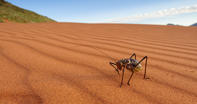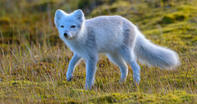Impending Extinction

Insects have been referred to as the 'sleeping giants' of climate change because of their ability to move and adapt so quickly to changing conditions. As for the other creatures that cannot move or adapt...well, for many of them, their future is pretty certain.
Numerous species are expected to become extinct as their homes begin to unravel in this way. Projecting the future distribution of 1 103 species of plants and animals around the globe into the mid-range predicted climate of 2050, 15 to 35 percent of the species were committed to extinction.
Species Migration

This may only be a theoretical exercise, but it highlights the urgency of the future we are facing. Already species shift has been documented - 51 species of butterflies in the UK have moved to higher altitudes or, where possible, shifted their home range northwards.
Stories are emerging of fishermen off these shores encountering strange fish in their nets. Previously unrecorded hammerhead sharks, triggerfish and sun fish are turning up in catches. Octopus are being caught off the south coast and Japanese oysters are breeding successfully in these same waters.
According to the World Wildlife Foundation (WWF), a '1°C rise in temperature pushed haddock, cod, plaice and lemon sole 200 to 400 miles north'. In Antarctica, the tough-as-boots Adelie penguins, one of only two ice-dependent penguin species, are thriving in the southern reaches of their range but declining seriously in the north.
The sub-Antarctic system is creeping down into the former polar environment of Biscoe Island near the western Antarctic Peninsula. Adelie penguins are abandoning their breeding colonies here and are being replaced by gentoo penguins, which are associated with the sub-Antarctic islands of the Falklands and Prince Edward Islands.
Other changes are being documented: Many plants in Europe flower about a week earlier than they did fifty years ago and shed their leaves in the autumn five days later. British birds breed an average of nine days earlier than in the mid-20th century, and frogs mate up to seven weeks sooner.
Tree swallows in North America migrate north in spring twelve days earlier than they did a quarter century ago. Red foxes in Canada are shifting their ranges hundreds of miles toward the pole, moving into the territories of Arctic foxes. Alpine plants are edging uphill and beginning to overrun rare species near mountain summits.